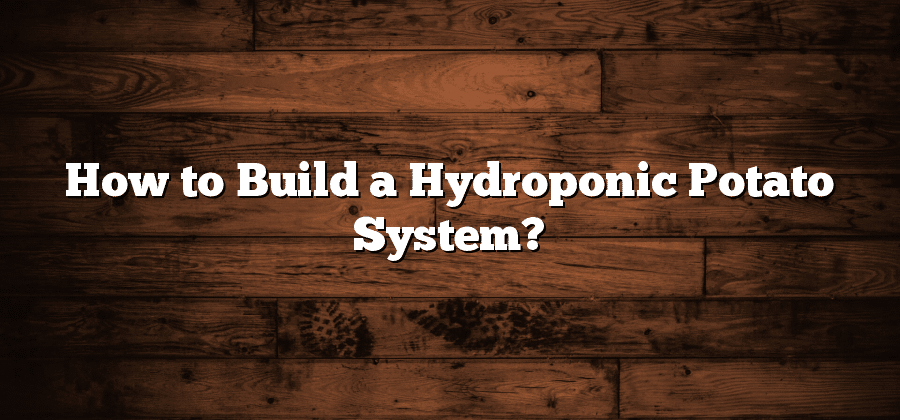Selecting the Ideal Potato Variety
One of the key factors in successfully growing potatoes is selecting the ideal potato variety. With countless varieties to choose from, it can be overwhelming to determine which one will be the best fit for your specific needs and growing conditions. When making this important decision, it is essential to consider factors such as the desired use of the potatoes, the climate and soil conditions of your growing area, and the level of maintenance and care required by each variety.
First, think about how you plan to use the potatoes you grow. Are you looking for a variety that is best suited for frying? Or perhaps you prefer potatoes that are ideal for baking or boiling? Different potato varieties have different textures, flavors, and cooking characteristics, so selecting a variety that aligns with your culinary preferences is crucial. Researching and taste-testing different varieties can help you identify which ones best meet your specific needs.
Next, consider the climate and soil conditions of your growing area. Some potato varieties thrive in cooler climates, while others are more tolerant of heat. Additionally, certain varieties may be more resistant to common potato diseases or pests that are prevalent in your region. Understanding the specific requirements and adaptability of different potato varieties will enable you to select ones that can withstand and flourish in your specific climate and soil conditions.
Designing the Hydroponic System Layout
When it comes to designing the hydroponic system layout for growing potatoes, there are several key factors to consider. Firstly, it is important to plan for adequate space in order to accommodate the desired number of plants. This can be achieved by optimizing the distance between the individual pots or vertical towers, ensuring sufficient airflow and ease of access for maintenance purposes.
Another crucial aspect of designing the hydroponic system layout is the consideration of nutrient distribution. Potatoes require a well-balanced nutrient solution to thrive, so it is essential to ensure that the system is designed to evenly distribute the nutrients to all plants. This can be achieved by implementing a recirculating system with properly placed drip lines or by using a top-feed system that delivers the nutrient solution directly to the root zone. Additionally, it is important to consider the placement of the nutrient reservoir and the ease of access for regular monitoring and adjustments. By carefully considering these factors, the hydroponic system layout can be optimized to provide the ideal growing conditions for potatoes.
Constructing a Sturdy and Efficient Support Structure
A sturdy and efficient support structure is essential when constructing a successful hydroponic potato system. It is crucial to carefully plan and design the support system to ensure stability and optimal growth of the plants. One important consideration is the material used for the support structure. Strong materials such as steel or galvanized iron are typically recommended as they can withstand the weight of the plants and provide long-lasting support. Additionally, the design of the structure should be carefully thought out, taking into account the number of plants to be supported and the available space. The support structure should be able to easily accommodate the growth of the potato plants and prevent them from collapsing or becoming tangled.
Another important aspect of constructing a sturdy and efficient support structure is ensuring proper anchoring. The support system should be securely anchored to the ground or any other stable surface. This will help prevent any movement or instability that could potentially damage the plants. It is also important to consider the height of the structure. The support system should be tall enough to allow the plants to grow vertically without any restrictions. Adequate spacing between the plants and the support structure is also essential to allow sufficient air circulation and prevent any damage from occurring. When constructing a sturdy and efficient support structure for a hydroponic potato system, careful planning, material selection, and proper anchoring are key factors to consider.
Choosing the Right Growing Medium for Potatoes
When it comes to growing potatoes, selecting the right growing medium is crucial for the success of your plants. The growing medium serves as the foundation for the roots to develop and absorb necessary nutrients. It is important to choose a medium that provides adequate drainage, aeration, and moisture retention.
One popular option for potato cultivation is a mixture of peat moss, vermiculite, and compost. Peat moss helps with moisture retention and aeration, while vermiculite aids in drainage and moisture regulation. Adding compost to the mix provides nutrients and improves the overall fertility of the soil. This combination creates an ideal growing medium that allows the potatoes to thrive and ensures healthy and robust plant growth.
Providing Adequate Lighting for Optimal Growth
Potato plants, like any other plants, require adequate lighting for optimal growth and development. The right amount and quality of light are crucial for photosynthesis, the process by which plants convert light energy into chemical energy, essential for their growth. When it comes to selecting the ideal lighting for your hydroponic potato system, there are a few key factors to consider.
Firstly, it’s important to understand that potatoes require a minimum of 12 to 14 hours of light per day to meet their energy needs. This means that investing in a reliable and efficient lighting system is essential. LED grow lights are a popular choice among hydroponic growers due to their energy efficiency and ability to provide the specific light spectrum required for plant growth. Additionally, LEDs generate less heat compared to other lighting options, reducing the risk of damaging the plants. When selecting LED grow lights, opt for models with adjustable intensity and spectrums suitable for different stages of potato growth, from seedlings to tuber formation.






